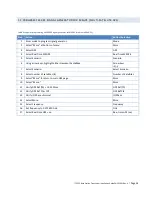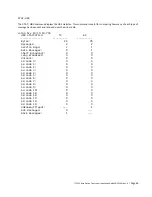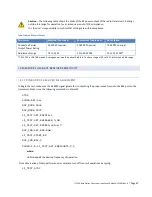
ITC 220 Base Station Transceiver Installation Guide PN 133991 Rev. A
| Page 53
Step
Action
Button/Selection
1100 0110 0001 1001
1010 1101 1111 1000
0111 0001 0110 1101
1010 0110 1111 1011
0001 1110 1011 0001
0101 0000 0100 1100
1000 1000 0001 1010
1101 0100 0000 0010
14
Insert end bits.
1111 1111 1111 1111
15
Press “Return” twice.
Return Return
16
Press the “Rename” button.
Rename
17
Use the “More” button to give the user file a useful name, “DQPSK.”
D-Q-P-S-K-2-3 or a
suitable unused file
name.
18
Save the user file.
Enter
19
Return to an upper level by pressing “Mode Setup” to define additional parameters. Mode Setup
20
Select “Filter.”
Filter
21
Choose “Select.”
Select
22
Pick “Root Nyquist.”
Root Nyquist
23
Define the filter alpha to be 0.35 by picking “Filter Alpha.”
Filter Alpha
24
Use the numeric keypad to enter 0.35 then “Enter.”
0.35 Enter
25
Return to an upper level by pressing “Mode Setup” to define additional parameters. Mode Setup
26
Select “Symbol Rate.”
Symbol Rate
27
Using the numeric keypad, enter 16 ksps for full-rate testing or 8 ksps for half-rate
testing.
16ksps / 8ksps
28
Return to an upper level by pressing “Mode Setup” to define additional parameters. Mode Setup
29
Load the user defined data file just created.
Data
30
Pick “User File.”
User File
31
Use cursor keys to select “DQPSK23” and press “Select File.”
Select File
32
Set “Custom” to “On.”
Custom
33
Save the file.
Save
34
Select a register that is not in use.
“Select Reg,” and then
“1” (or suitable unused
register), and then “Save
Reg”
35
Press “preset” and now load the waveform.
Preset
36
Recall the waveform with “Recall.”
Recall
37
Select the register using the numeric keypad and press “Enter.”
1 Enter
38
Set the frequency and power level, and be sure RF and Modulation are ON.
Frequency: 220 MHz
Amplitude: –80 dBm
Mod: ON
RF: ON






























